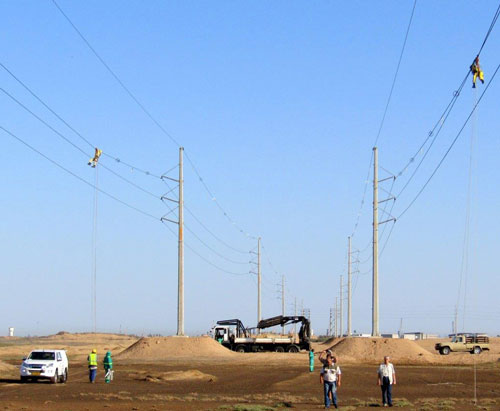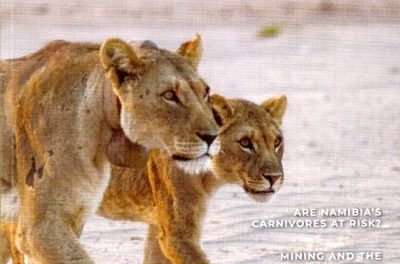
Bird diverters set to save power, money and wildlife

Bird diverters were recently installed on two unmarked section of NamPower’s two 132 kV Kuiseb- Walvis Bay line as part of the mitigation measures.
NamPower installed these diverters because concerns were being raised about the potential impact of power lines on bird life and power outages caused by birds nesting on power line structures which may also cause fires.
According to the power utility, they used a combination of marking devices, namely alternation double loop (spiral) bird flight diverters and ‘‘flag’ bird flight diverters, to make more visible to birds. They said a ‘flag’’ bird flight diverter is a device with contrasting black and white components that move with the wind, increasing viability under poor light condition and the white parts are phosphorescent and glow in the dark.
Additional parts of the lines had been marked previously during construction as part of standard Environmental Impact Assessment (EIA) practice, therefore the marked and unmarked sections have been monitored to test the effectiveness of the mitigation measures and the results so far have been positive, NamPower added.
In 2008, due to these concern on wildlife, NamPower formed a strategic partnership with Namibia Nature Foundation with the aim of addressing wildlife-power supply interactions in Namibia and the partnership also aims at incorporating bird/wildlife mitigation measures into existing power supply infrastructure and into the planning of future networks in order to reduce the impact that the power infrastructure has on birds and vice versa.
NamPower’s two 132 kV Kuiseb-Walvis Bay power lines that feed the town of Walvis Bay from the Kuiseb substation, were replaced with double steel monopole structures in 2015 in an effort to support increased electricity demand as a result of increased economic activity in the Erongo Region.
A 3.9 km section of this power line route runs past an area know as Bird Paradise with several Important Bird Areas (IBAs) and the Lagoon is regarded as one of the most important coastal wetlands in the southern Sub-Sahara region and in Africa and is declared as a Ramsar site












































